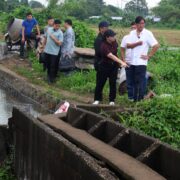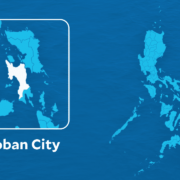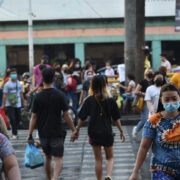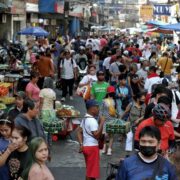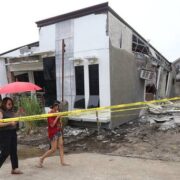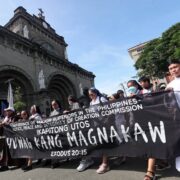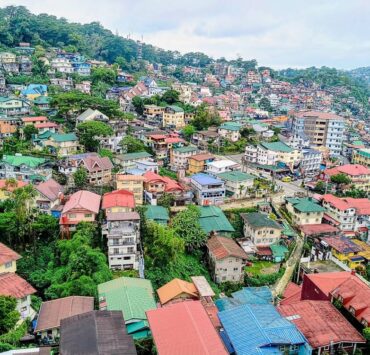14 hurt as magnitude 5.8 aftershock jolts northern Cebu
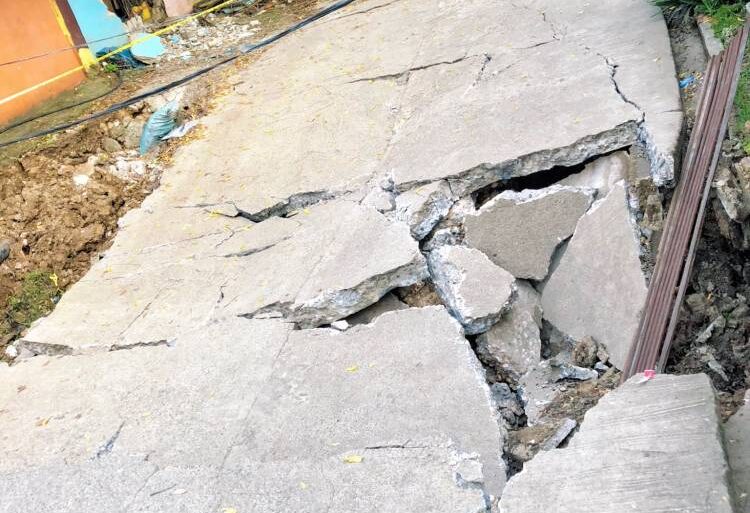
CEBU CITY—At least 14 people were injured when another strong aftershock measuring magnitude 5.8 jolted northern Cebu at 1 a.m. on Monday while thousands of residents were still recovering from the devastation left by the magnitude 6.9 earthquake that struck the region on Sept. 30.
According to the Cebu Provincial Disaster Risk Reduction and Management Office (PDRRMO), the latest tremor, which state volcanologists have downgraded from the magnitude 6 they initially reported, was among the strongest of over 10,000 aftershocks recorded since the main quake two weeks ago.
As of noon Monday, the injured were eight in Bogo City, four in Daanbantayan, and two in San Remigio—the same northern areas hardest hit by the earlier disaster. All injured victims were promptly assisted by local disaster and health responders.
Cebu PDRRMO focal person Dennis Francis Pastor said all injuries were minor, including cases of chest pain, lacerations, and asthma attacks, all sustained during the chaos caused by the early-morning tremor.
In Bogo City, many residents said they struggled to go back to sleep after the tremor.
“My muscles were shaking. We can’t sleep anymore after that,” wrote Lynde Seno of Barangay Dakit in Cebuano in a Facebook post, saying his family continued to stay outside their damaged home for safety.
Bogo City Mayor Mayel Martinez said the City Disaster Risk Reduction and Management Office responded to eight emergency incidents following the pre-dawn shaking that sent many residents rushing out of their homes in fear.
Infra damage
The aftershock also caused damage to infrastructure in one of the affected municipalities.
According to a report from the San Remigio municipal government, a major road near the Hagnaya Integrated School sustained large cracks after Monday’s strong aftershock, prompting local authorities to urge residents to refrain from passing through the area as the road might collapse.
Provincial assessments showed that roads between the cities of Cebu and Bogo, which are about 98 kilometers apart, remained passable, while power and telecommunications services have not been interrupted.
The Sept. 30 magnitude 6.9 earthquake off Bogo City remains the deadliest in the region in recent history, killing at least 75 people and injuring over 1,200 others, according to official reports. More than 23,000 houses were destroyed or damaged, and several heritage structures—including the Daanbantayan Church—were also badly damaged.
Calamity state
A state of calamity remained in effect in Bogo City and affected northern Cebu municipalities to speed up relief and rehabilitation efforts that continued across northern Cebu, as communities slowly rebuilt from the disasters.
Monday’s aftershock was also felt in Bohol, prompting several local governments, including Tagbilaran City and the towns of Inabanga, Pilar, Getafe and Talibon to suspended classes as a precaution. The Holy Name University in Tagbilaran postponed the opening of its intramural games from Monday to Tuesday.
The Philippine Institute of Volcanology and Seismology (Phivolcs) initially recorded Monday’s quake at magnitude 6.0 but later downgraded it to magnitude 5.8 in its 6 a.m. bulletin.
Phivolcs said the quake’s epicenter was 10 kilometers southwest of Bogo City, at a shallow depth. The tremor was recorded at Intensity 4 in Cebu City. It was also felt in Leyte, Iloilo City, Roxas City, Pontevedra (Capiz), Carlos P. Garcia and Dauis (Bohol), Canlaon City, Himamaylan City (Negros Occidental), and Legazpi City, Albay.



